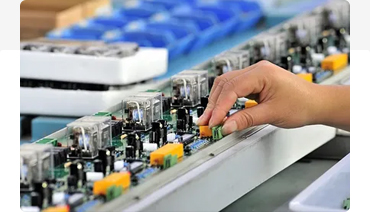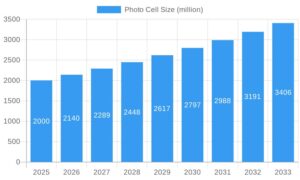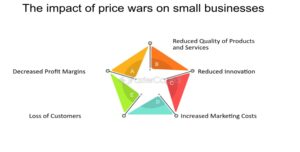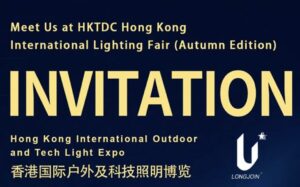Why South America Struggles to Manufacture Photocell Products on a Large Scale? An In-depth Analysis of Technological, Industrial Chain, and Market Challenges
Introduce
South America’s lighting industry is on the rise. As cities push for smarter infrastructure, the demand for photocell products like light sensor photocell switches and photocontrol systems is growing. These devices help automate lighting systems, reduce energy consumption, and support smart city goals. However, despite this growth, local manufacturing lags behind.
So, the big question is—why can’t South America produce these high-demand products on a large scale? This article explores the real obstacles in technology, supply chains, market readiness, and government policy.
What Technical Barriers Stop Local Photocell Manufacturing?
To build high-performance photocell sensor systems, a region must invest heavily in research, testing, and high-tech production lines. These products aren’t just metal and wires—they involve complex signal processing, weather-resistant casings, and programmable control units. Every layer of the product requires deep engineering knowledge.
In South America, the lack of these capabilities is one of the largest bottlenecks. Many nations simply don’t have the technical institutions, experienced engineers, or industry-academic partnerships needed to create and innovate smart lighting products from scratch.
Challenge | Description |
Lack of local talent | Few universities specialize in sensor development or smart lighting. |
No innovation hubs | Absence of major tech parks or R&D hubs to push advancements in photocell tech. |
Minimal patents | Low participation in global photocell or light sensor patents. |
Because local researchers and engineers don’t have access to the same tools or funding as their global counterparts, the region remains dependent on imported designs and technologies.
Why Is the Industrial Chain Incomplete?
Even with good ideas and skilled workers, you can’t make modern photocell for street light products without a steady supply of quality parts. Unfortunately, most of these components—like microchips, durable plastics, and sensitive photodiodes—are not produced locally. This forces manufacturers to rely on imported parts.
When a country lacks a comprehensive ecosystem of suppliers and factories that work together, it becomes difficult to scale. The end result is that even simple parts like waterproof connectors or high-temperature coatings must be shipped in, driving up lead times and costs.
Component | Source |
Photodiodes | Mostly from Asia |
Controllers | Imported from Europe or North America |
Waterproof housings | Low local production capability |
This means local producers have to import critical pieces, adding cost and delay. Also, when parts are out of stock internationally, production stalls altogether.

Does Cheaper Labor Help Offset High Costs?
It’s true that labor is more affordable in many South American countries. However, the savings from cheaper workers often don’t offset the higher costs from inefficient production processes. Many local factories use older, manual methods that can’t keep up with modern automation.
When producing photocell lighting sensors, consistency and accuracy matter. Manual production introduces more defects, and old machines require more maintenance. These factors result in a slow, error-prone system that offsets the benefit of lower wages.
Cost Breakdown | Estimate (USD) |
Labor | $2–$5/hr |
Import duties for components | 20–35% markup |
Machinery maintenance | High, due to older equipment |
So even though wages are lower in places like Brazil or Peru, other costs eat away at any savings. Plus, outdated machinery and limited automation hurt both speed and precision.
Is the Market Big Enough to Justify Local Manufacturing?
Another major problem is demand. Building and maintaining a full-scale photocell control production facility costs millions. Unless there’s a large, steady stream of orders, the investment simply isn’t worth it.
In many South American countries, smart lighting rollouts are still in early pilot phases. Urban areas are testing dusk-to-dawn photocell sensor solutions, but rural and suburban regions still rely on traditional systems. Without consistent demand across the board, no investor wants to risk setting up a high-tech factory.
Country | Smart Streetlight Penetration (Est.) |
Brazil | 12% |
Argentina | 7% |
Colombia | 5% |
The public isn’t fully aware of dusk-to-dawn photocell sensor systems, and educational campaigns are few. Without widespread adoption, the demand remains too low to justify building local production plants.
Are There Policy or Government Limitations?
For industries like lighting control, public policy often makes the difference between slow growth and full-scale production. Sadly, most South American governments haven’t offered the kind of aggressive support needed for advanced manufacturing.
Tax breaks, startup grants, and government contracts often go to traditional sectors like mining or agriculture. Innovation centers or smart infrastructure funds are still rare. This leaves would-be photocell entrepreneurs without the capital or confidence to take the plunge.
Issue | Impact |
Weak R&D funding | Slows innovation |
No incentive for local makers | Importing is cheaper and easier |
No global certification | Can’t compete with international products |

And when it comes to subsidies or innovation grants? Most are directed toward more traditional sectors like agriculture and energy, not smart lighting.
Do Global Competitors Make It Harder?
Yes—and it’s not just about price. Leading companies from Europe, Asia, and North America have spent decades refining their technologies, optimizing logistics, and winning global trust. Their photo switch sensor products often arrive pre-configured, certified, and ready to install.
It’s tough for a new player to enter that space without matching product quality, certifications, and customer service. These global giants already offer comprehensive lighting ecosystems with mobile apps, cloud support, and smart AI features. That makes them the default choice for most buyers.
Company | Region | Strengths |
Signify | Netherlands | Smart integration |
Legrand | France | Smart sockets and receptacles |
Long-Join | China | NEMA/Zhaga compatible lighting controls |
These brands have already scaled, meaning they can offer better prices and faster delivery. South American companies are simply unable to match that, for now.
Conclusion
South America’s struggles in photocell manufacturing boil down to underdeveloped research systems, fragile supply chains, rising costs, limited market demand, and lackluster government support. Until these foundational problems are solved, imported products will continue to dominate the region’s smart lighting sector.
External Links:
●https://www.candtsolution.com/news_events-detail/what-is-ip65-rating/
●https://europa.eu/youreurope/business/product-requirements/labels-markings/ce-marking/index_en.htm
●https://www.ul.com/
●https://en.wikipedia.org/wiki/Certification_mark
●https://en.wikipedia.org/wiki/Photoresistor
●https://www.electronics-tutorials.ws/io/io_3.html






